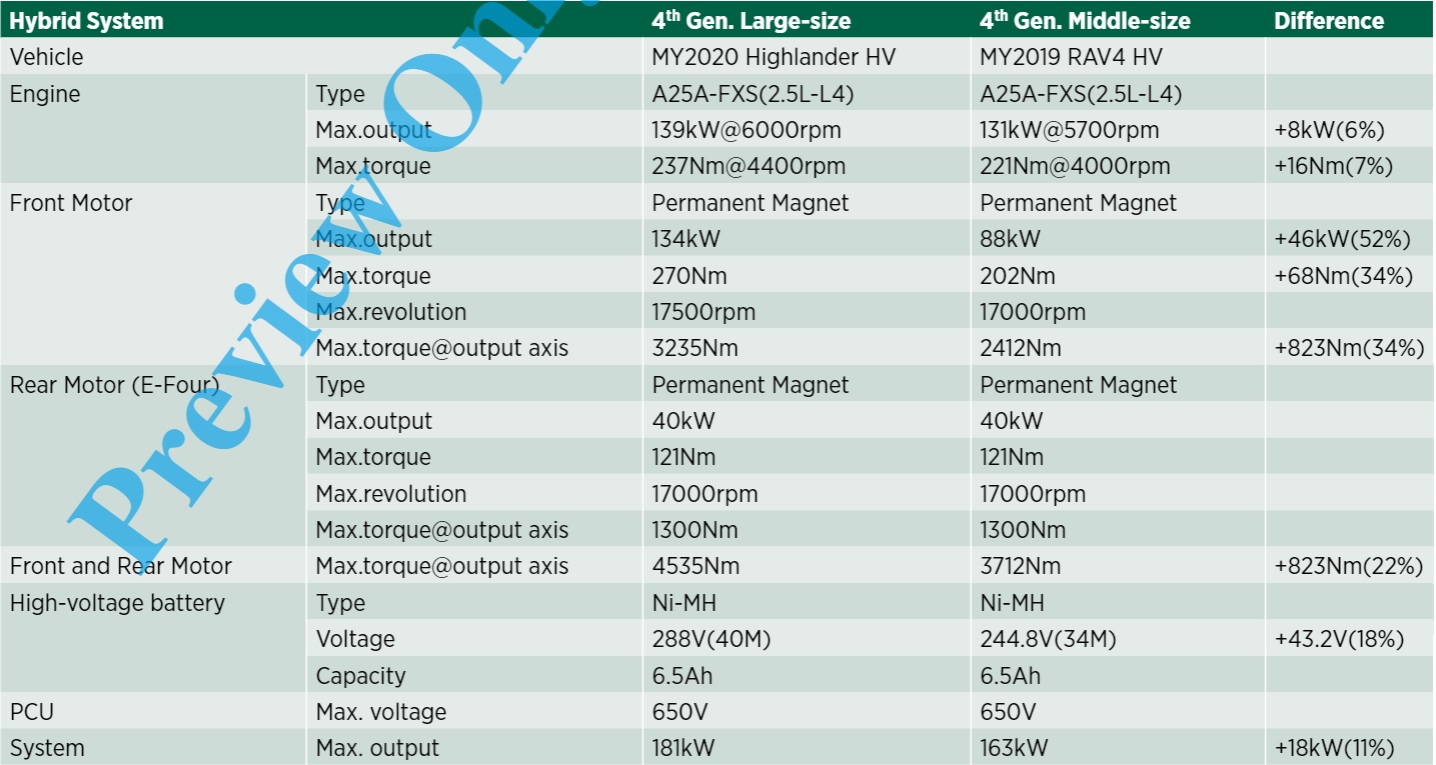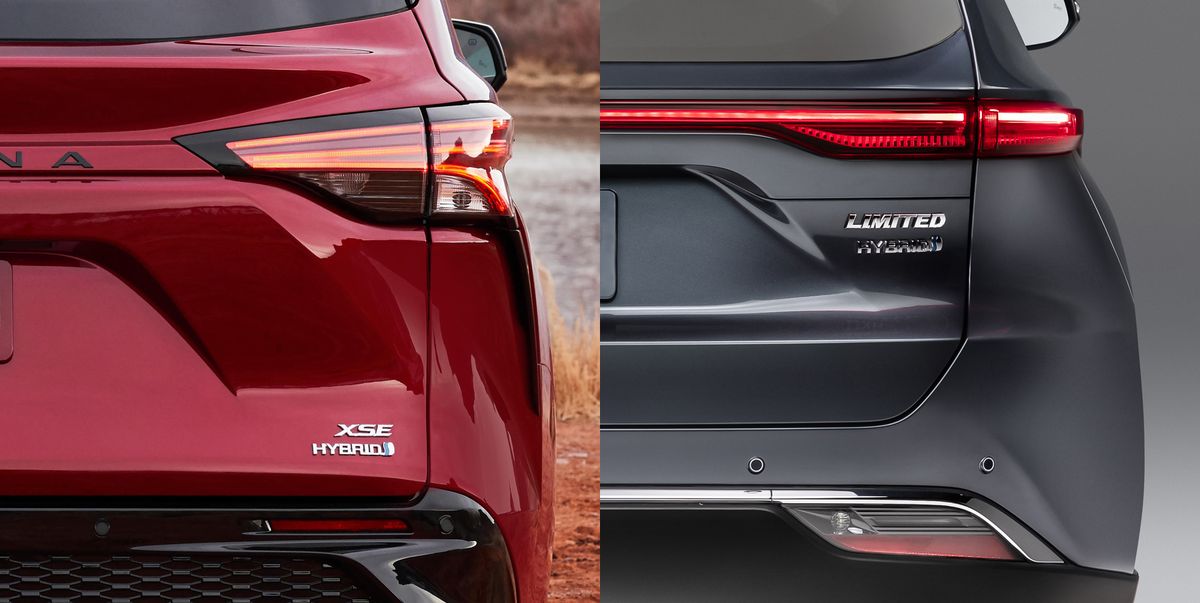Actually this worry about the hybrid powertrain not having enough torque is unfounded. Since PSD complicates calculation of torque at the crank, the only thing we need to compare is the wheel torque (which is what really propels the car). It is very common to see people confusing engine torque with wheel torque. We actually have all the data we need to compare it to a 3.5L V6 Sienna:
The '350h' hybrid system has 34% more torque at the output axis than the '300h' system. They didn't define what 'output axis' is, but from these numbers it's not hard to tell these are wheel torque (i.e. after multiplication through PSD and final drive and accounting for all losses). So at its peak a FWD Sienna hybrid has 3235N.m (2386lb.ft) peak torque while the E-Four version has 4535N.m (3345lb.ft). However, I don't think the E-Four version could achieve the full peak torque due to battery power limitations (but from these numbers one can easily see how the '350h' can beome a '450h+' with a bigger battery).

We can calculate the wheel torque of a V6 Sienna using the numbers given by Toyota for the Highlander. The 2GR-FKS engine makes 356N.m (263lb.ft) at 4700 rpm. The first gear of the 8AT has a ratio of 5.52:1 and the final drive ratio is 3.00:1. Assuming 10% drivetrain losses this amounts to 5306N.m (3914lb.ft) at 4700rpm engine speed, 284rpm wheel speed, and 40km/h (25mph) vehicle speed. It sounds like the V6 has considerably more wheel torque, but remember, the first gear only goes up to 30mph! The first gears used on modern cars are only for hill starting and engine braking so it's not an entirely fair comparison here.
A better comparison would be at similar reduction ratios. We don't know the minimum ratio of the PSD but it's reasonable to assume it's ~10 given max motor rpm and top speed (we know the E-Four rear axle has a ratio of 10.8:1). This corresponds to the second gear on the 8AT with 3.18:1 ratio. Calculated that way the max wheel torque of the V6 Sienna is 3057N.m (2255lb.ft) which is
6% less than the Hybrid.
A better way to calculate wheel torque is just dividing power delivered to the wheels by wheel rpm, since this way we don't need to know the exact ratios (especially for CVT) and the only variable that matters is power. So with 181kW (243hp) against 220kW (295hp) it seems the hybrid system is at a disadvantage.
It's actually not. Since it's effectively CVT, the hybrid will have 181kW delivered to the wheels for most of the speed range, while the V6 8AT will only have 220kW at exactly 6600 engine rpm. A quick calculations suggests that at 4700rpm the 2GR-FKS makes 175kW at the crank or ~158kW at the wheels. The engine will overtake the 181kW of the hybrid at around 5200rpm assuming the torque curve only drops a bit after peak.
So in conclusion? A V6 Sienna will *only* offer more wheel torque, and thus acceleration, in first gear or when engine speed is above 5200rpm. I don't think a lot of "soccer moms" will push their van above 5200rpm though... Still this means a V6 Sienna will win a 0-60 drag race because it's allowed to use the high rpm range. But for most daily driving, the 243hp '350h' system offers same level of performance as a real 3.5L V6.
Of course it's entirely possible the hybrid will run out of battery power after which wheel torque is severely reduced. But that requires a pretty long continuous gradient with no chance of recharging. Because the hybrid battery has an incredible 15C continuous charging rate, it only takes about 90 seconds to fully charge, so even a slight flat region may allow the car recoup a considerable amount of charge. In fact, the SOC management in modern Toyota hybrids is so good they rarely run out even when towing a load up majority of the gradient one can encounter. In the LM thread I mentioned the possibility of its failing to climb a gradient, but that's just because the ICE is so laughably weak for a 2.3 ton van.









